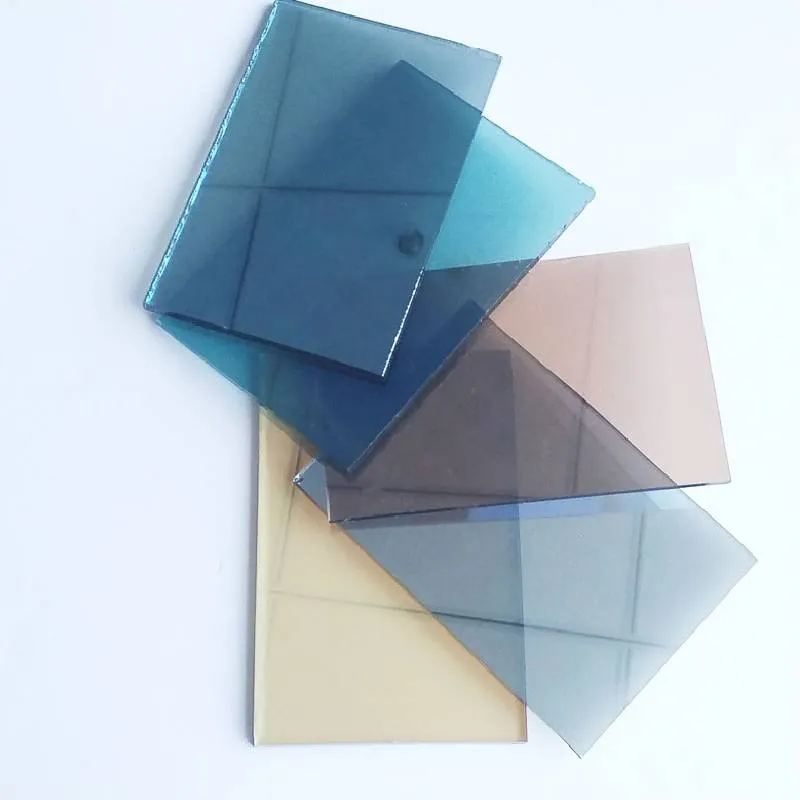Float Glass Design A Modern Approach to Architectural Aesthetics
Float glass, known for its clarity, uniform thickness, and smooth surfaces, has revolutionized the world of architectural design. This innovative glass manufacturing process, developed in the 1950s, involves floating molten glass on molten tin, resulting in a flawless and high-quality product. The design possibilities offered by float glass are virtually limitless, making it a preferred choice among architects and designers.
When it comes to aesthetic design, float glass stands out due to its ability to enhance natural light in spaces while providing an unobstructed view. Large windows made of float glass can transform interiors, creating an open and airy feel that connects the outdoors with indoor spaces. This transparency not only allows for an abundance of natural light, reducing the need for artificial lighting, but also enhances the visual connection with nature, further promoting well-being.
In modern architecture, float glass can be utilized in various applications, ranging from storefronts to residential buildings. The versatility of float glass allows it to be treated with different coatings and tints, enabling architects to meet energy efficiency standards while maintaining the desired aesthetic. For example, low-emissivity (Low-E) coatings can be applied to float glass to minimize heat transfer, significantly improving the energy efficiency of a building without compromising its design integrity.
float glass design
Sustainability is another key consideration in contemporary float glass design
. As the industry progresses, manufacturers are focusing on environmentally friendly practices, such as recycling old glass and reducing energy consumption in production. This aligns with the growing trend of incorporating green building materials, which appeals to environmentally conscious consumers.
Moreover, float glass can be creatively manipulated through techniques like lamination, tempering, and etching, allowing designers to experiment with textures and patterns. This capability opens up new avenues for personalization and artistic expression in architectural projects. For instance, etched float glass can serve as a decorative element while maintaining privacy in public spaces.
In summary, float glass design plays a pivotal role in modern architecture, marrying form and function seamlessly. Its ability to enhance natural light, coupled with advancements in energy efficiency and sustainable practices, positions float glass as a foundational element in the buildings of the future. As architects continue to explore its potential, the creative possibilities with float glass will undoubtedly lead to innovative and breathtaking designs that inspire awe and appreciation in the world of architecture.
 Afrikaans
Afrikaans  Albanian
Albanian  Amharic
Amharic  Arabic
Arabic  Armenian
Armenian  Azerbaijani
Azerbaijani  Basque
Basque  Belarusian
Belarusian  Bengali
Bengali  Bosnian
Bosnian  Bulgarian
Bulgarian  Catalan
Catalan  Cebuano
Cebuano  Corsican
Corsican  Croatian
Croatian  Czech
Czech  Danish
Danish  Dutch
Dutch  English
English  Esperanto
Esperanto  Estonian
Estonian  Finnish
Finnish  French
French  Frisian
Frisian  Galician
Galician  Georgian
Georgian  German
German  Greek
Greek  Gujarati
Gujarati  Haitian Creole
Haitian Creole  hausa
hausa  hawaiian
hawaiian  Hebrew
Hebrew  Hindi
Hindi  Miao
Miao  Hungarian
Hungarian  Icelandic
Icelandic  igbo
igbo  Indonesian
Indonesian  irish
irish  Italian
Italian  Japanese
Japanese  Javanese
Javanese  Kannada
Kannada  kazakh
kazakh  Khmer
Khmer  Rwandese
Rwandese  Korean
Korean  Kurdish
Kurdish  Kyrgyz
Kyrgyz  Lao
Lao  Latin
Latin  Latvian
Latvian  Lithuanian
Lithuanian  Luxembourgish
Luxembourgish  Macedonian
Macedonian  Malgashi
Malgashi  Malay
Malay  Malayalam
Malayalam  Maltese
Maltese  Maori
Maori  Marathi
Marathi  Mongolian
Mongolian  Myanmar
Myanmar  Nepali
Nepali  Norwegian
Norwegian  Norwegian
Norwegian  Occitan
Occitan  Pashto
Pashto  Persian
Persian  Polish
Polish  Portuguese
Portuguese  Punjabi
Punjabi  Romanian
Romanian  Russian
Russian  Samoan
Samoan  Scottish Gaelic
Scottish Gaelic  Serbian
Serbian  Sesotho
Sesotho  Shona
Shona  Sindhi
Sindhi  Sinhala
Sinhala  Slovak
Slovak  Slovenian
Slovenian  Somali
Somali  Spanish
Spanish  Sundanese
Sundanese  Swahili
Swahili  Swedish
Swedish  Tagalog
Tagalog  Tajik
Tajik  Tamil
Tamil  Tatar
Tatar  Telugu
Telugu  Thai
Thai  Turkish
Turkish  Turkmen
Turkmen  Ukrainian
Ukrainian  Urdu
Urdu  Uighur
Uighur  Uzbek
Uzbek  Vietnamese
Vietnamese  Welsh
Welsh  Bantu
Bantu  Yiddish
Yiddish  Yoruba
Yoruba  Zulu
Zulu 

